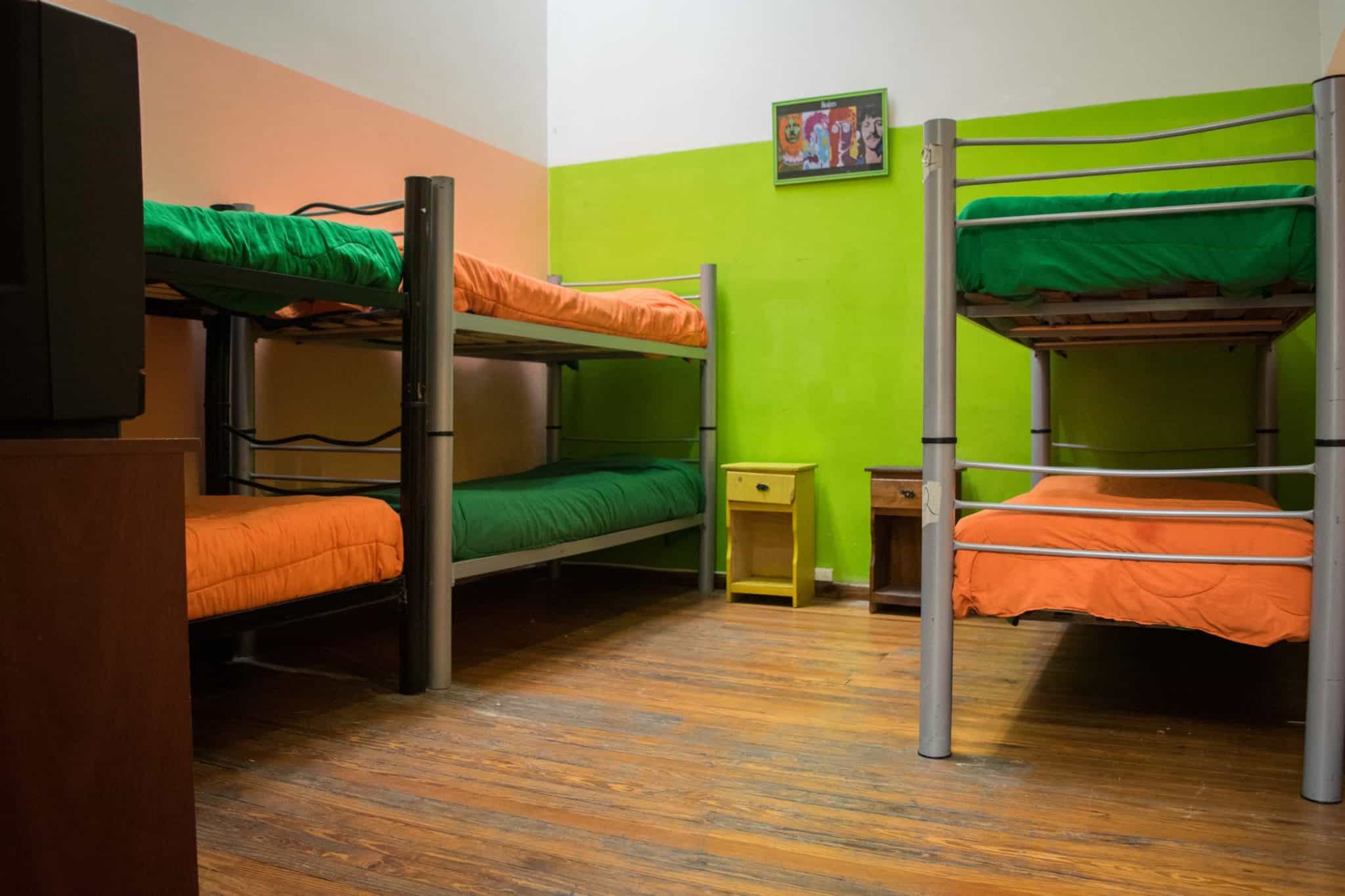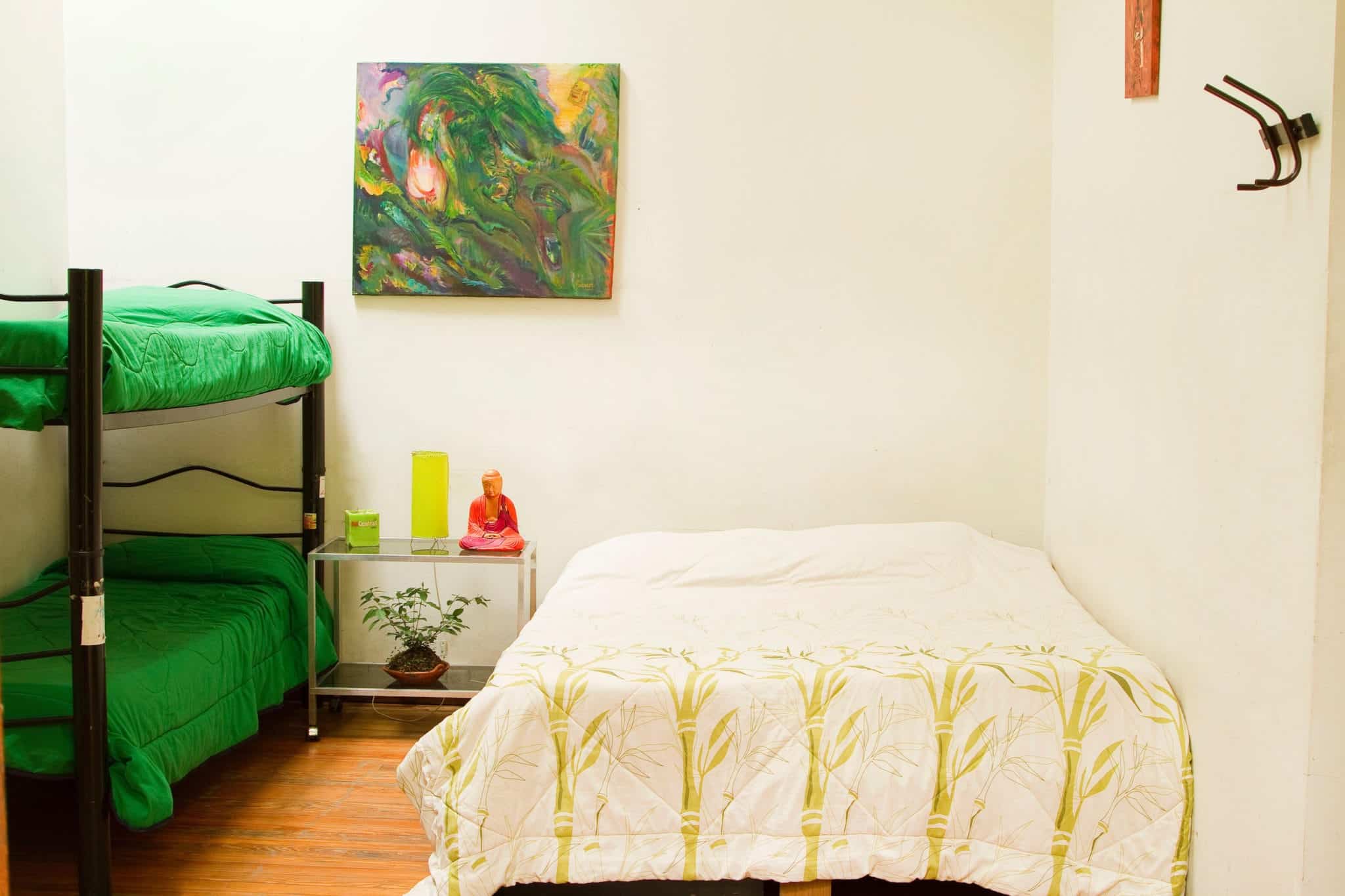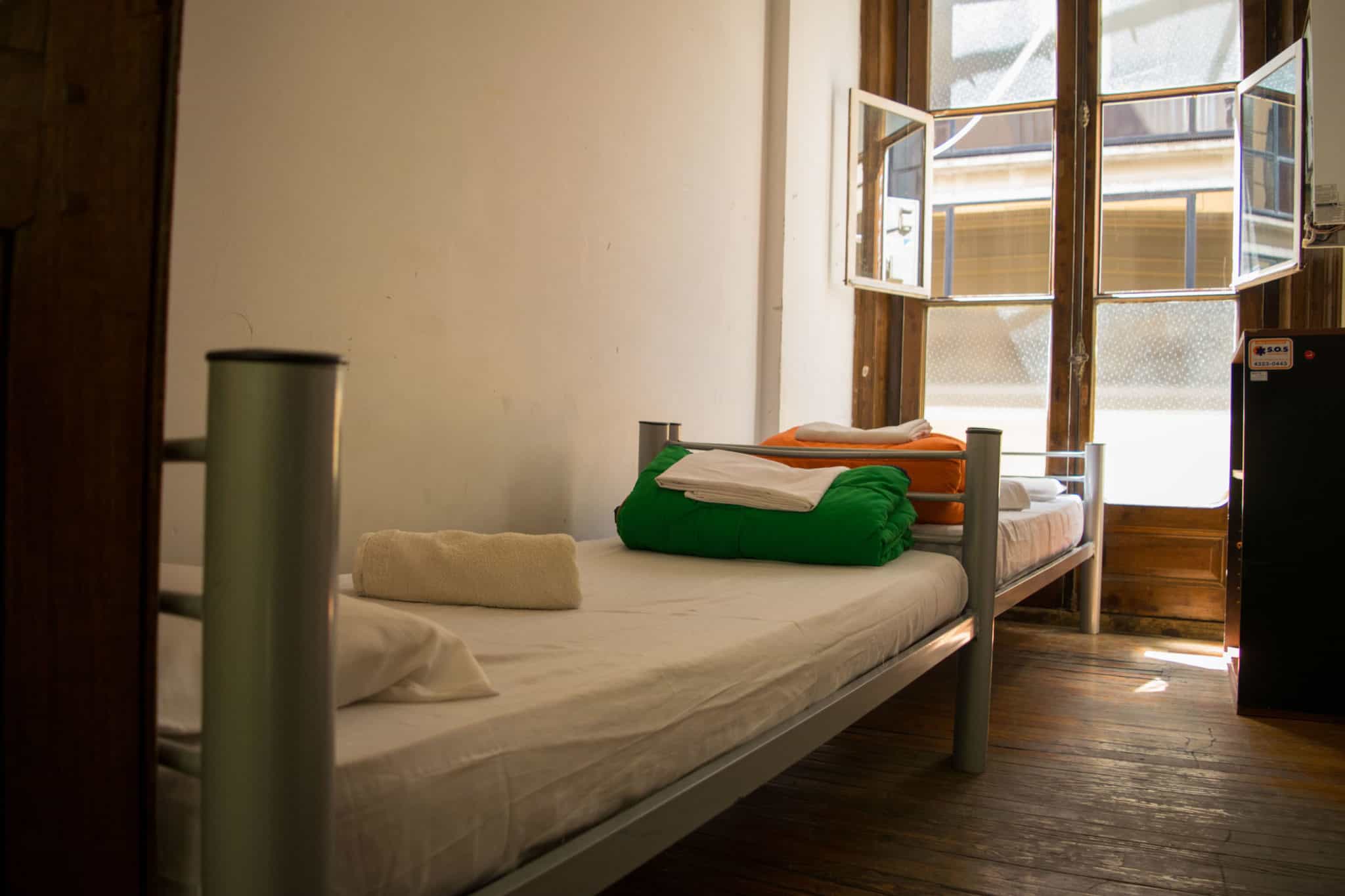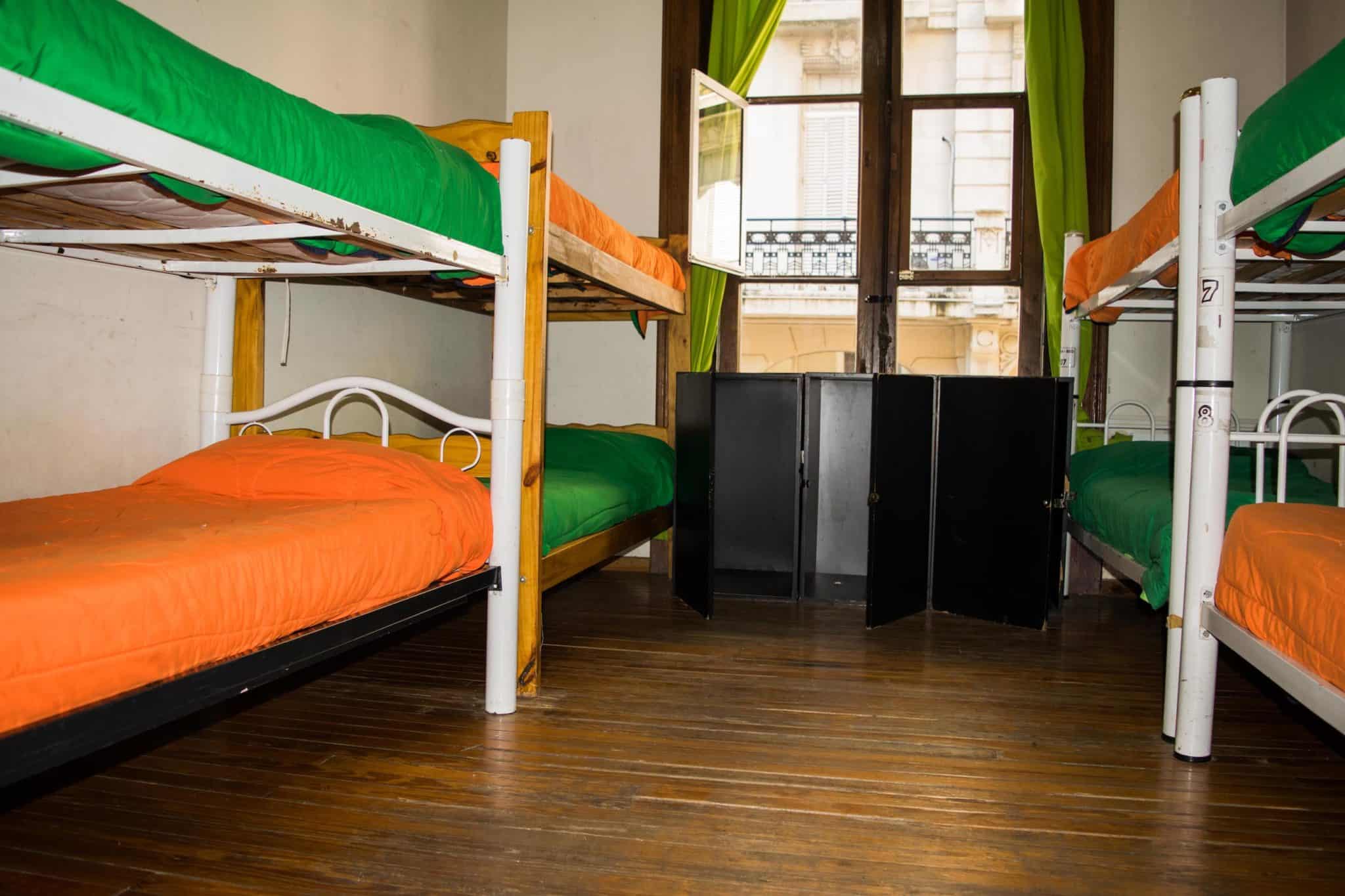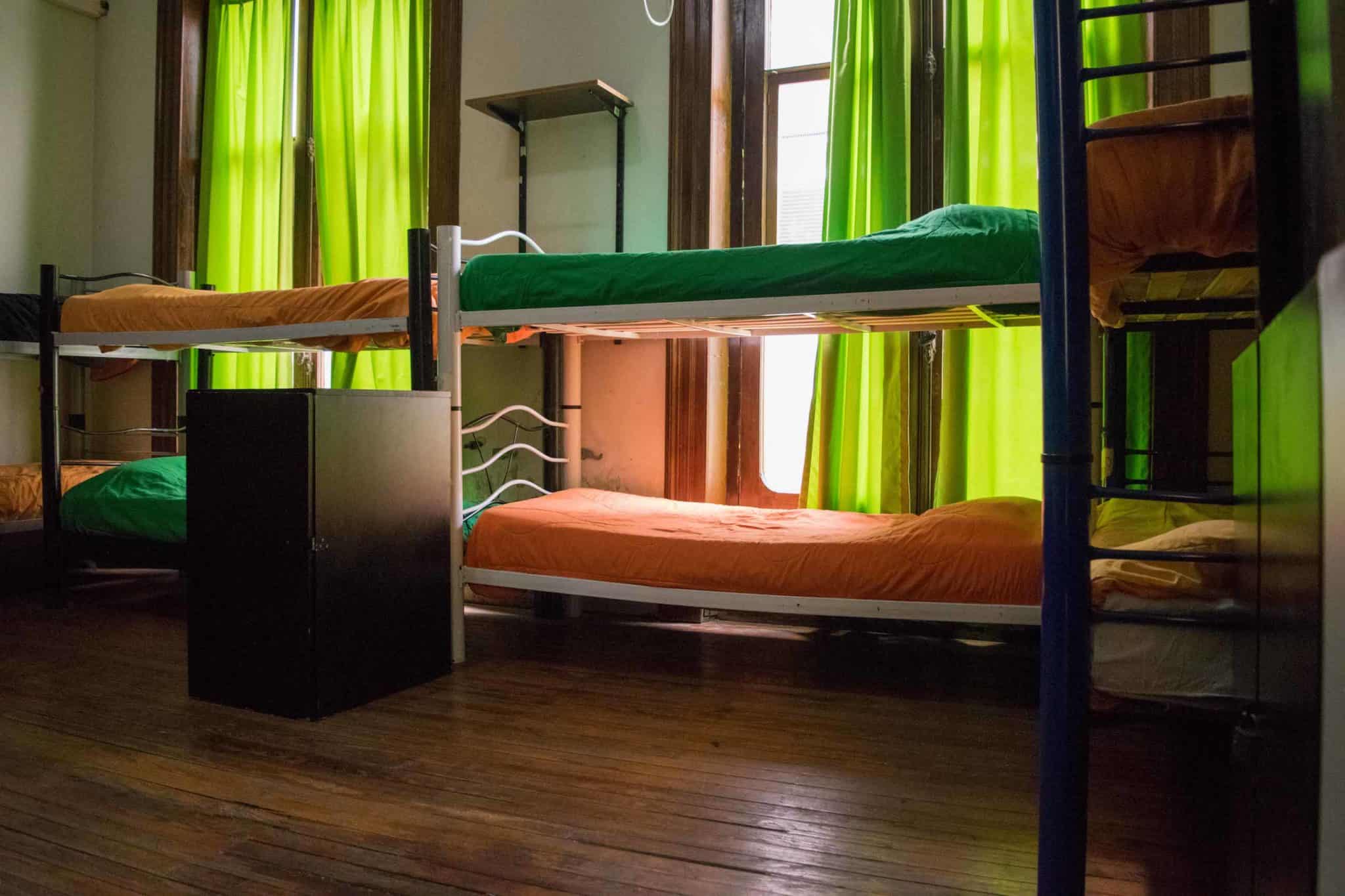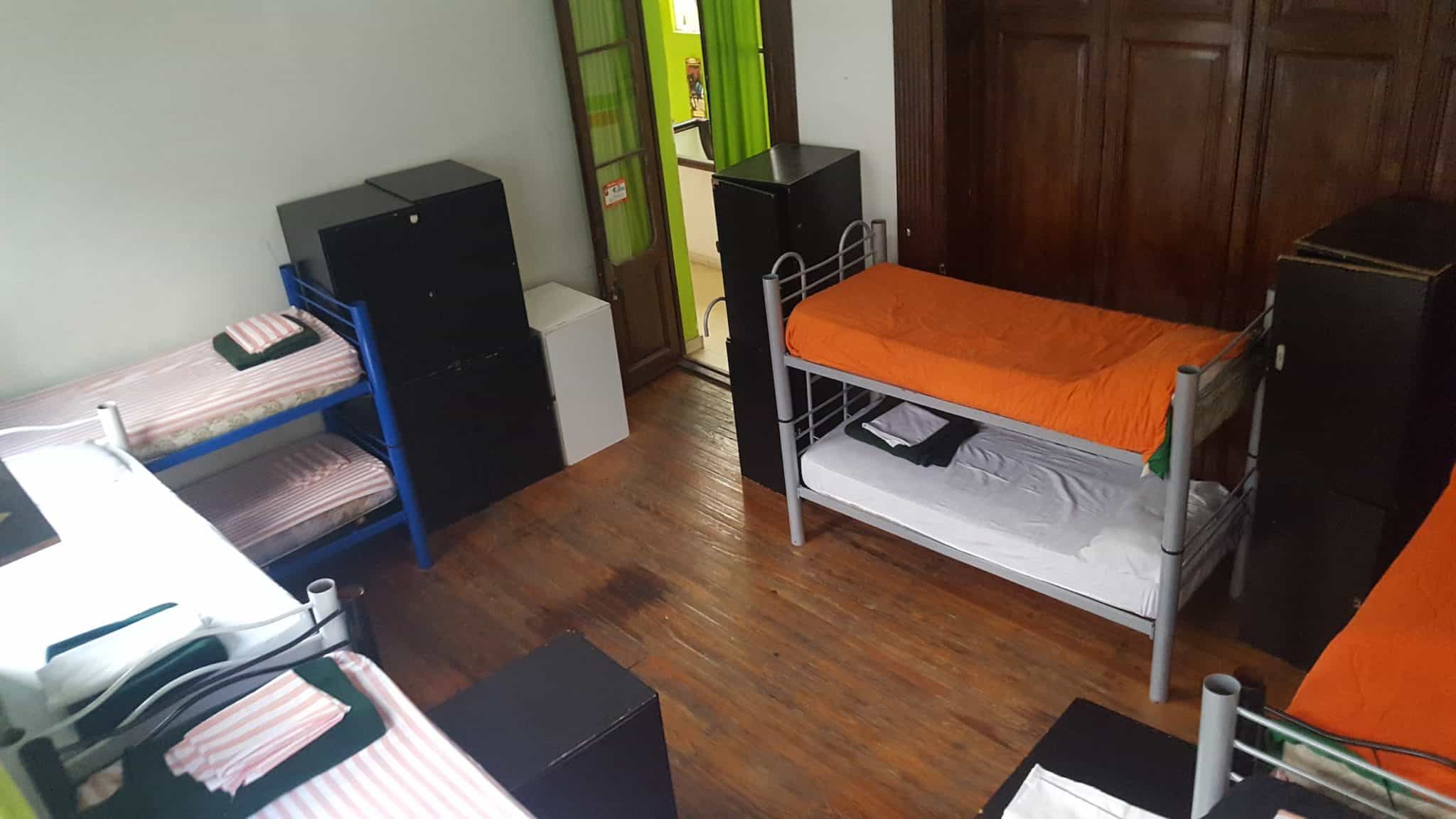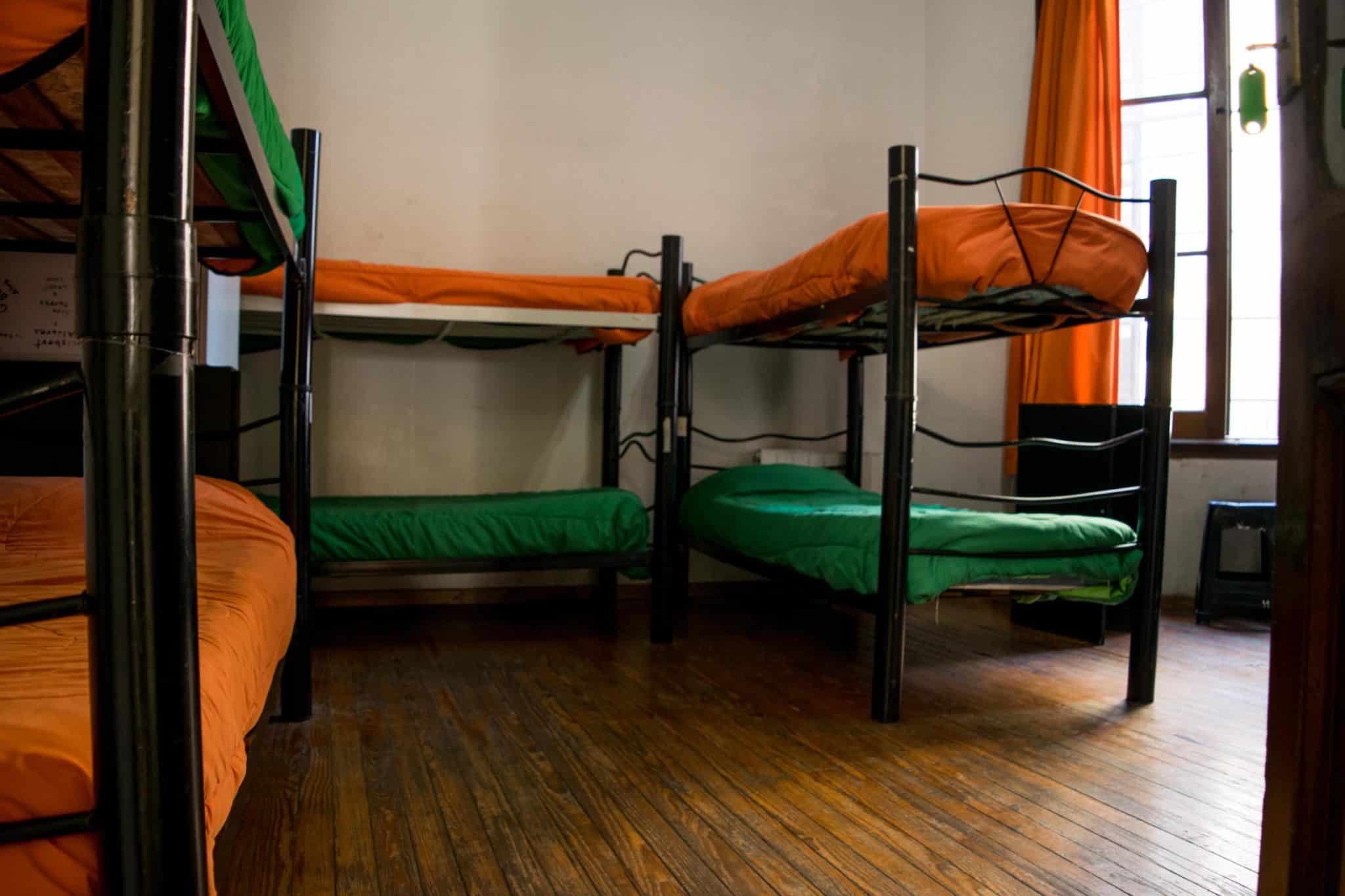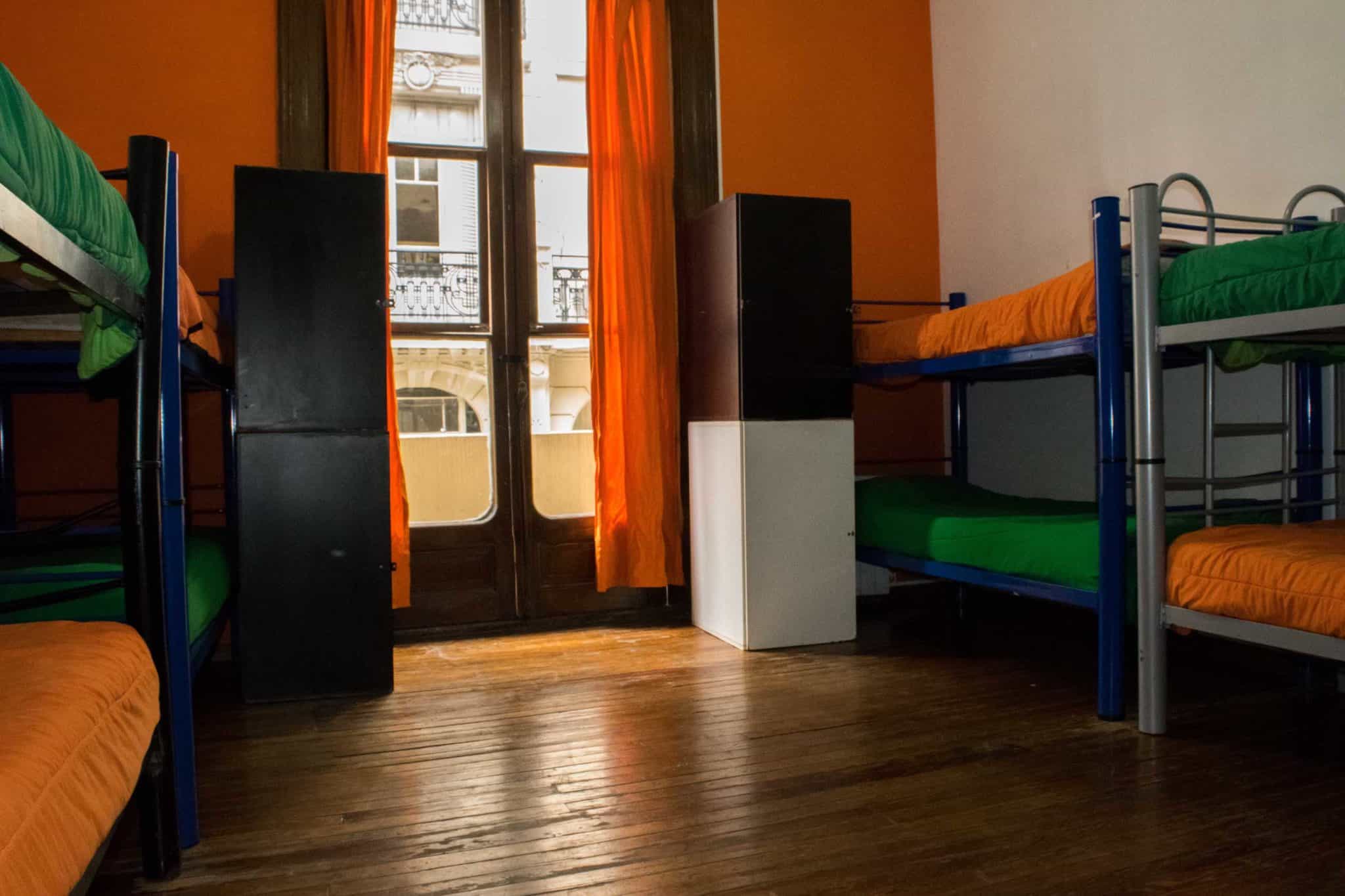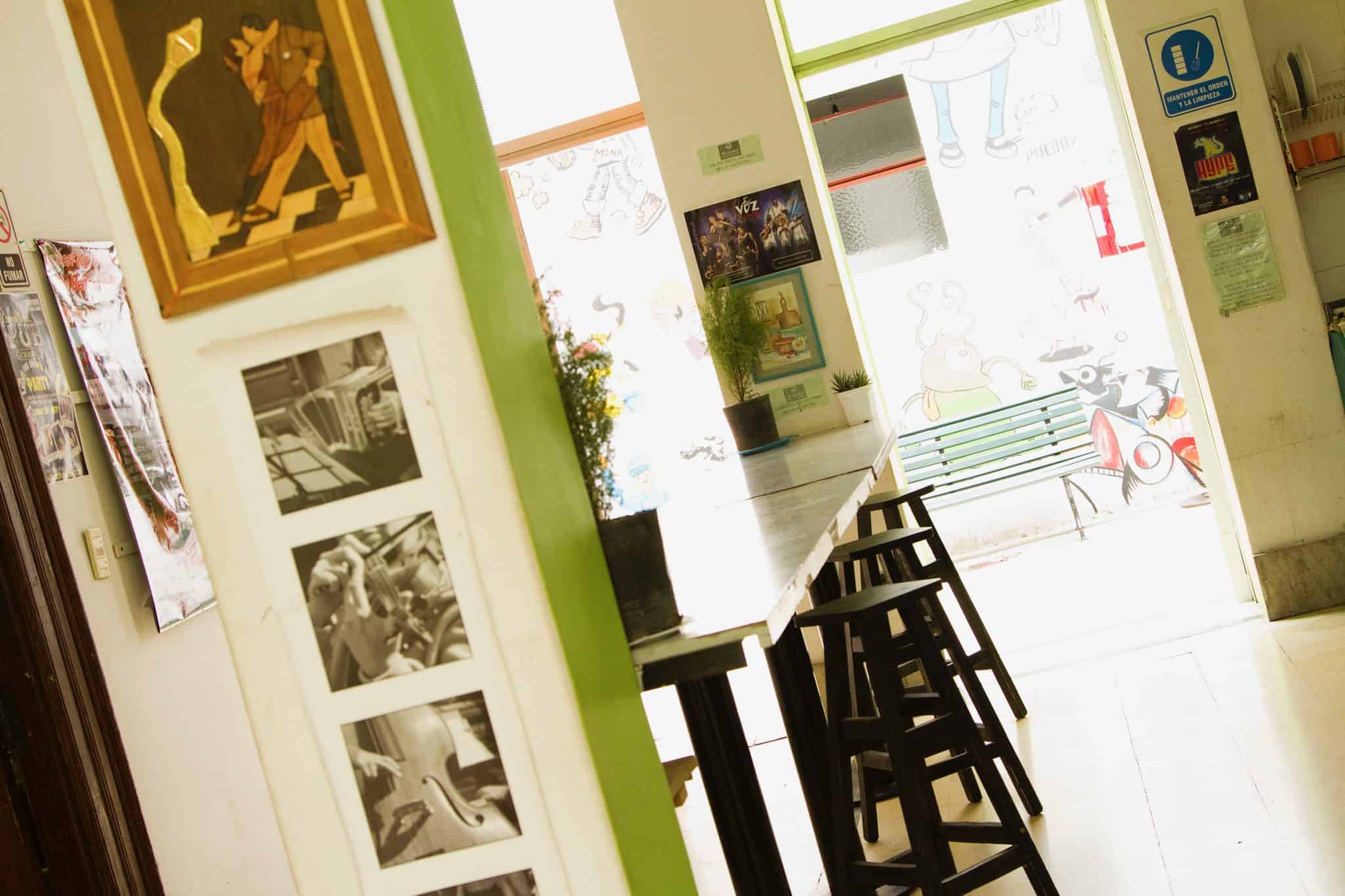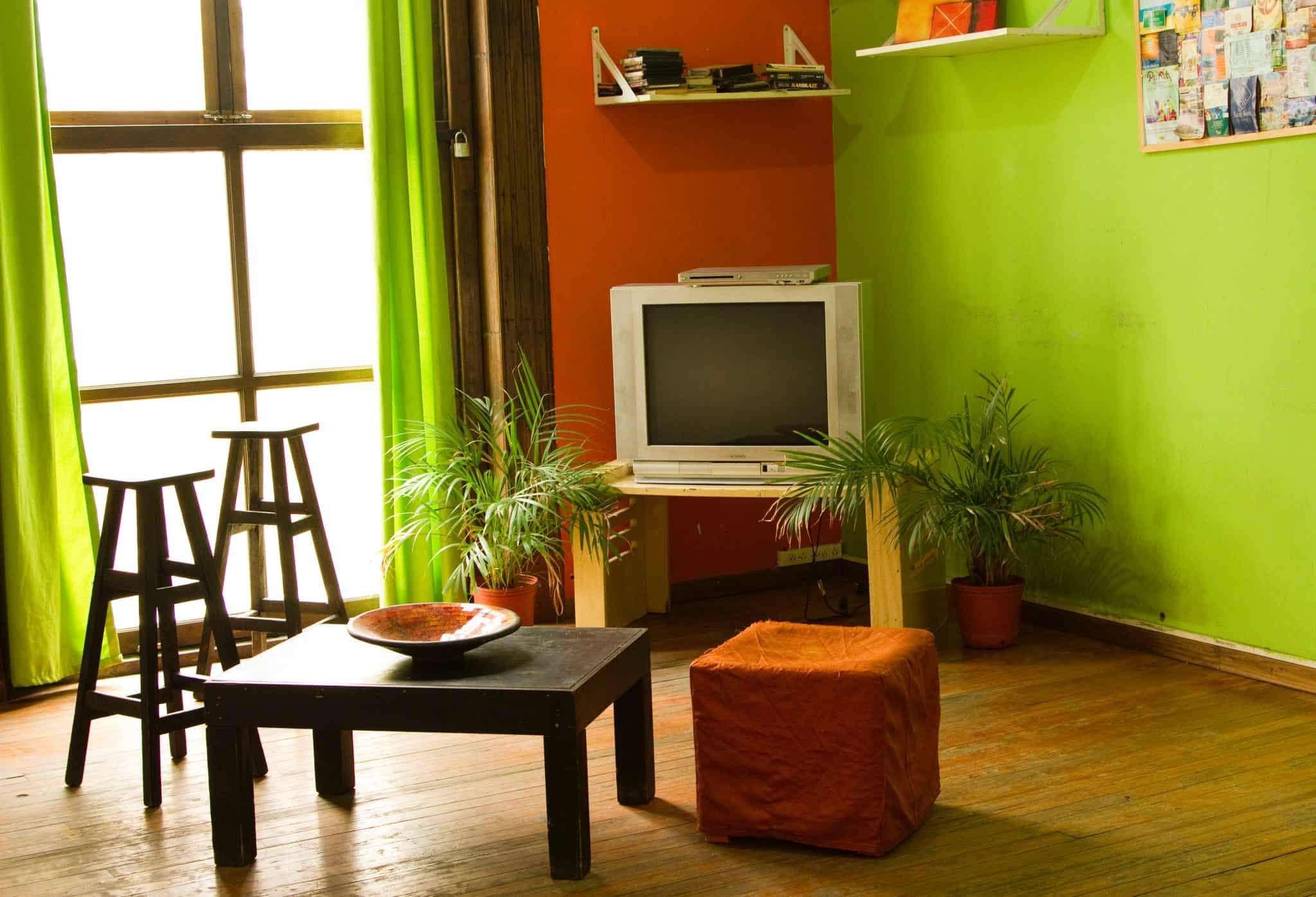The 06 Central Hostel tempts you to come experience Buenos Aires.
Montserrat is a neighborhood located in the ancient heart of the city. It was originally called this way because it was the place where The Virgin of Monserrat’s Church was. This chapel dates from 1750 and was built by the architect Antonio Masella. The Catalonian farmer Juan Pedro Sierra requested him to build the church to pay honour to the Virgin of Montserrat.
During the 18th and 19th Centuries, the streets “Piedras” and “Avenida de Mayo” divided the neighborhood into two zones: the south and the west, at the time the southern area was known as “Catedral al Sur”. As time went by the neighborhood started to be named as “Barrio del Tambor” (Drums neighborhood) due to the big number of black slaves that lived and played drums there.
1. “de Mayo” Square (Plaza de Mayo)
Balcarce, Rivadavia, Bolívar, Hipólito Yrigoyen
During the second foundation of Buenos Aires in 1580, Juan de Garay decided the spot for the Mayor’s Square: the current location of the “Plaza de Mayo”.
These was the scenary where the “Revolución de Mayo” took place in 1810. Here the Independence was formally declared and sworn in 1816 and the National Constitution was even signed here in 1860. During the dictatorship period that began in 1976 it became the meeting spot for the “Madres de Plaza de Mayo,” who asked for their sons and daughters (kidnapped by the military) to come back home alive. Today it represents the most important concentration point for all social demonstration and protests.
At the middle of the square there is a Pyramid commemorating the Revolution of 1810.
2. Government House or Pink House (Casa de Gobierno or Casa Rosada)
Balcarce 50
The National Government’s head office has been here since it was first conceived in the 1810, although the current building was finished in 1884. It was painted pink due to a decision by President Sarmiento (1868-1874).
Over Rivadavia street there is the presidential entrance; over Yrigoyen street it is the entrance to the “Casa Rosada” Museum and at the rear part you can see what is left from the the ancient Customs house.
3. Metropolitan Cathedral (Catedral Metropolitana)
Rivadavia and San Martín
The first Cathedral in the city dates from 1622 although the building that you can see today was finished in 1822, more than a century later. Paintings and sculptures by Italian artists are appreciable inside. The remains of the General José de San Martín rest at a mausoleum in the Cathedral. San Martín was a heroe of the independence cause.
4. Cabildo
Bolívar 65
The “Cabildo” was the institution that represented the colony’s interests during the colonial period. The present construction was started during the first years of the 18th Century. It is the house of the Cabildo and the May Revolution Museum.
5. Julio Argentino Roca Monument
Diagonal Sur and Pere Street
It was inaugurated in 1941. On its marble base there are two big figures representing The Mother Country and the Work. The monument is crowned with a bronze equestrian sculpture by José Zorrilla de San Martín. Julio Argentino Roca (1843-1914) was a militar who participated in the battles of Cepeda and Pavón and played an important role in the war with Paraguay. As a minister of war he led the “Campaña al Desierto” and was the country’s President twice in 1880 and 1898.
6. Manzana de las Luces (Square) – Iglesia San Ignacio (Church) – Colegio Nacional Buenos Aires (College)
Alsina, Bolívar, Moreno, Peru
The Jesuits settled here in 1633 but were thrown away in 1767. After this the University of Buenos Aires and the National Congress were built in this very same block. There are underground galleries that connect these buildings with the surrounding ones.
Iglesia de San Ignacio (Church)
It was the Jesuits’ main chapel and the oldest church in the city (1686).
Colegio Nacional Buenos Aires (College)
It dates back to the beginning of the 18th Century. It and it is one of the most prestigious colleges in the country.
7. Librería de Ávila (Bookstore)
Alsina 500
In 1785, a pharmacy opened its doors on this corner but it was destined to be the first book store in the city. By 1830 it sold books exclusively and became an intellectual’s reference place. Today the “Librería de Ávila” works here and is the only shop in Buenos Aires that keeps the same location and activity since the colonial times.
8. Home of María Josefa Ezcurra (Casa de María Josefa Ezcurra)
Alsina 455
This construction dates from 1836, in it we can see the Italian Renaissance influence especially in the facade. Their board-structured doors are faithful to the French style typical of the Colony.
9. Café La Puerto Rico
Alsina 420
This “Outstanding Bar”, as it was declared by the Legislative Body of Buenos Aires, was inaugurated in 1887. It has a marvellous black-granite facade with windows that display the rich wooden carpentries. There are regular Tango shows performed in this café.
10. Altos de Elorriaga
Defensa and Alsina
This is the first high house that were built in Buenos Aires, inside there is a big patio from which there is access to all the rooms. They have conserved a balcony from where you can have a beautiful view of the river.
11. City Museum – La Estrella Pharmacy
Alsina and Defensa
A pharmacy runs at the ground level since 1834. Its ceiling was painted by the Italian artist Parisi, it has walnut tree-wooden shelves original from Italy and a museum on the top floor where you can take a look at some antique items of Buenos Aires.
12. San Francisco Church and monastery – San Roque Chapel
Alsina and Defensa
Architect Andrea Bianchi started with the building project around 1730 but it wasn’t finished until 1754. A German architect called Sackmann remodeled the front of the building during the first decade of the 20th Century and gave it the baroque style that is appreciable today. The facade is crowned with sculptures representing Saint Francis of Assisi, Dante Alighieri Giotto and Christopher Columbus. A fire in 1955 consumed part of the inner decoration and the main altarpiece. To replace the lost an 8 by 12 meter carpet was placed on the main altar.
This church shares its portico with The “San Roque” chapel, the latter opens on the sixteenth day of every month to celebrate the patron saint’s day. Inside there are images in polychrome wood dated from the 18th Century.
13. Plazoleta San Francisco (Square)
Alsina and Defensa
There are four statues that surround the “Pirámide de Mayo”, they represent Industry, Astronomy, Navigation and Geography. The small square needed to extend the church’s portico when the number of faithful who attended its services began to grow.
14. Bar El Colonial
Moreno adn Defensa
There are still some of the clay and straw bricks used in the colonial time conserved in this building.
15. Etnographic Museum Juan B. Ambrosetti
Moreno 340
This museum exhibits the most complete anthropological and ethnographic collection in the country, with items from the originial inhabitants such as the Onas, the Tehuelches, the Condorhuasi, the Tobas and the Guaraní. The building dates from 1880 and was planned by the architect Pedro Benoit.
16. Rivadavia House
Defensa 350
This is the house where the first Argentinian president Bernardino Rivadavia was born in 1780. It has a traditional colonial style with a simple facade.
17. Defense House and National Engraving Museum
Defensa 372
The museum counts with a complete collection of engravings both contemporary and from the last century.
18. Basilica “Nuestra Señora del Rosario” and “Santo Domingo” Monastery
Avenida Belgrano and Defensa
The construction of the chapel started in 1752 and was partially inaugurated in 1773. It still conserves some of its original lines, like the three naves Jesuit plant and its narrow side chapels. The corps of the country’s hero Manuel Belgrano rests here.
19. Manuel Belgrano’s Solar and Calmer Building
Belgrano between Defensa and Bolívar
Manuel Belgrano was born and died here (1770 – 1820).
20. Liniers House
Venezuela 469
The facade and a few murals are the only things that were kept from the original building. Its first owner was Martín Simón de Sarratea, who was Santiago de Liniers’ father-in-law and penultimate Viceroy of “El Río de La Plata”. The terms of the English General Beresford’s were treated here after one of England’s failing invasions.
21. Ex Casa de la Moneda (Currency House)
Defensa and México
All sorts of institutions were settled here and then continued somewhere else: the “Cuartel de la Partida Celadora y el Cuerpo de Leones de Policía” and the “Hospital del Rey” among other. In 1775, the authorities set the an economic policy: the “peso fuerte” (strong peso) as the official currency and created the Currency House where bills, stamps and fiscal values were printed.
It is an Italianized building with symmetric plant work of the engineer E. Costilla.
22. José Hernández’ House
México 524
A typical 19th Century house property of the author of “Martín Fierro.” Today the Argentine Writers’ Society works here.
23. Ex National Library
México Street 560
This 20th Century building used to house the National Lottery, but it was destined to become the National Library and it worked as such before it was even finished. The architect, work of the Italian architect Carlos Morra, represents the “Beaux Arts”
















